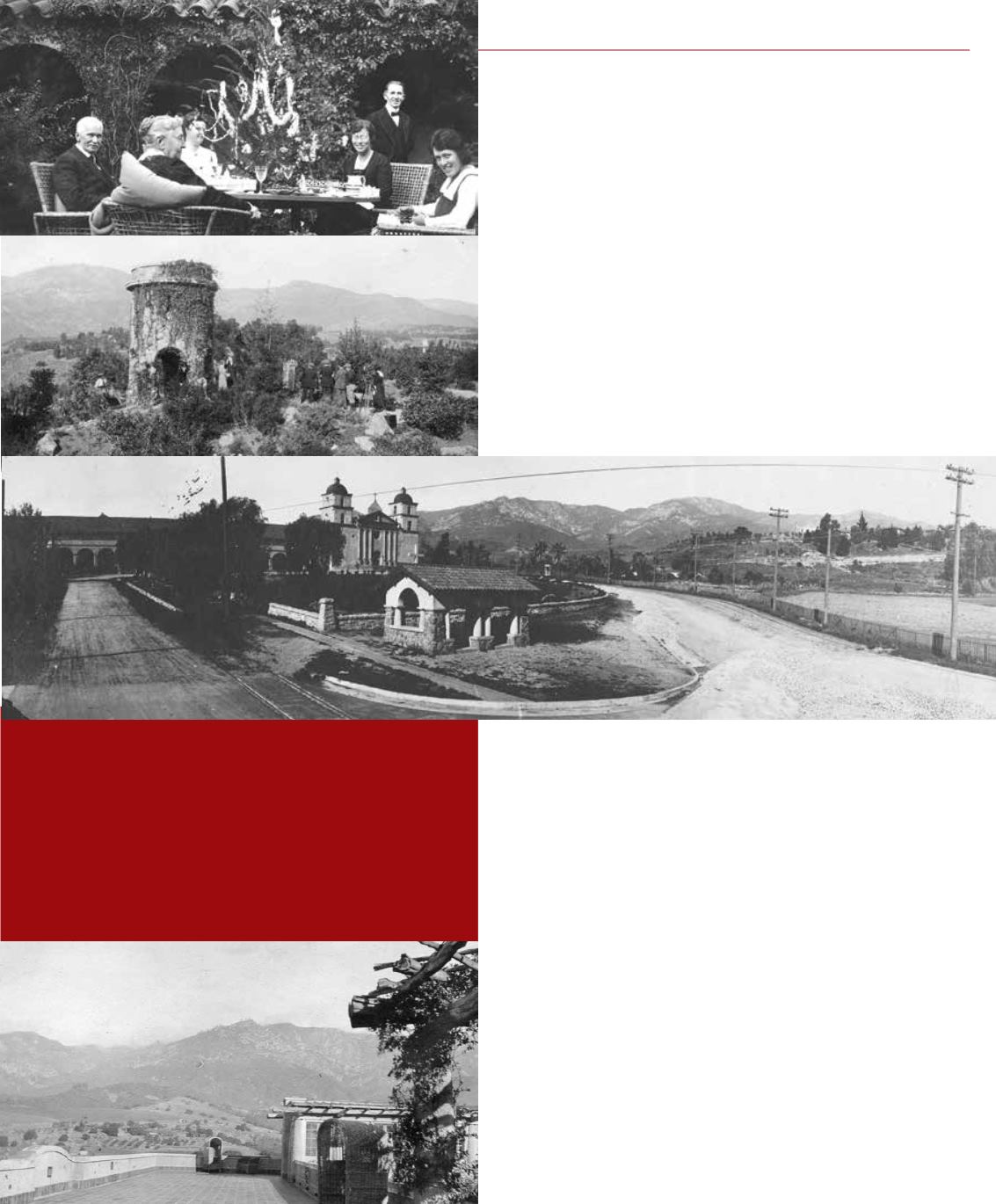
winter
|
spring
57
(top) Christmas in the courtyard at
El Cerrito
circa 1916 with (left to
right) Clarence, Harriet Winslow, a relative, Mary, butler, and Ruth;
(middle) A film crew sets up a scene in front of the romantic water
tower; (above) Clarence donated, and Roland Sauter designed, the
trolley wait station that once stood on the corner of Laguna and Los
Olivos streets; (below) The westside rooftop patio in front of Mary’s
north-facing studio and Clarence’s south facing office
MOGULS
&
MANSIONS
the west side of Mission Ridge and commissioned Russell Ray and
Windsor Soule to design a Spanish-style house. Working in the
Ray/Soule office at the time was fledgling architect Roland Sauter
of Maryland. Sauter became foreman of the project and continued
working for Black long after the Mission-style house was completed.
In April 1913, 30 men from Cornwall and Hunt started
constructing the monumental sandstone foundations. As the house
rose out of the rocks, so did two formal stairways on each side of a
symmetrical entry terrace. Besides a library and living room, the house
grew to include five bedrooms, each with a bath. Three servants’ rooms
with shared bath along with a sewing room and linen room occupied
the east wing. The north wing held the servant’s dining room, the
kitchen and pantry, and the family’s formal dining room.
The entrance hall led directly to an arcaded cloister where a
fountain bubbled romantically. A Mission-style portal, gated in
Spanish wrought iron, led to the gardens at the back of the house.
From the courtyard, a stone stairway led to the roof where vines grew
through a rough wooden trellis set atop cement columns. On the
north side, Mary’s studio faced magnificent views of the mountains.
On the south, Clarence’s den overlooked the city and mission.
Reminiscent of Medieval Spain, a round stone tower was built to
house the water tank near the northeast corner of the house.
El Cerrito
,
(Little Hill) as the house was called, was quickly discovered by Santa
Barbara’s own Flying A Studios, as well as other silent film companies
who used its expansive gardens, vast acreage, and romantic, historic
ambiance as a set for movies. In 1915, D.W. Griffith of Fine Arts Film


